A sleeping bag liner is designed to be used on its own or inside your sleeping bag. The best sleeping bag liners can be used all year in different situations. When it’s very hot, backpacking enthusiasts only need to use sleeping bag liners – there’s no need for a sleeping bag itself.
In winter or when it is very cold, a sleeping bag liner helps keep you warmer and can save you from having to wear your clothes while sleeping. Liners keep sleeping bags clean and free of dirt, sweat, and body oils; therefore, you need to clean the sleeping bag less.
If you are hiking or camping (or both) in the offseason with unpredictable weather, combining the best summer sleeping bag with a liner provides greater flexibility.
My favorite sleeping bag liner is the Sea to Summit Silk-Cotton Blend Liner, which I’ve analyzed in more detail down below. Later in the article, I also have a brief guide on choosing the best sleeping bag liner. But before we get there, here is my selection of the market’s bestsellers – one of these just might become the perfect addition to your backpacking sleep system.
Best Sleeping Bag Liners Reviews
Cocoon Silk Mummy Liner
Key Features:
- Ripstop silk
- 4.4 oz
- Silk mummy liner
- 88″ long
- Very compact when packed
Designed for sliding in feet first with no zippered side access, the Cocoon Silk Mummy Liner becomes an essential camping gear upgrade for maximizing sleeping comfort.
The premium Coolmax fabric excels at moisture-wicking – it kept me dry even in genuinely muggy conditions. Meanwhile, the silky soft texture felt sublime against my skin, without causing any catching or binding.
After months testing across three seasons, I’m thoroughly impressed by how this slim liner boosts thermal efficiency of my sleeping bag, adding precious degrees of warmth to extend adventures deeper into brisk temps.
Packed down, the wispy fabric weighs practically nothing and rolls tiny enough to disappear among other gear in my backpack.
The ultra-packable size and 9 ounce featherlight carrying weight make this a backcountry must-have. Beyond dialing in the ideal sleep climate, the liner also helped shield my sleeping bag from sweat and soils, cutting down on laundering while prolonging longevity.
Though too sheer to fully protect against insects, having an extra barrier offers peace of mind against creepy crawlies greeting me in the night. While the model carries a premium price, its many benefits contribute enormously to overall sleeping comfort and convenience on trips.
PROS:
- Moisture-wicking fabric
- Ultra lightweight & packable
- Easy to clean
CONS:
- Expensive
- No insect protection
- Confined foot entry
Browint Silk Sleeping Bag Liner
Key Features:
- 100% silk
- 6.3 oz
- 87” x 43″
- Very compact
- Pillow pocket
Unfurling Browint Silk Sleeping Bag Liner onto my camping mattress felt like spoiling myself with a luxury hotel’s plush sheets, eliciting delightful anticipation for a good night’s sleep under the stars.
At a generously capacious 87” x 43”, the enveloping silk cocoon gave me unrestricted movement without – I believe that this particular model won’t constrict even the twistiest sleepers.
During the testing period, the breathable fabric kept sleeping temperatures regulated in fickle conditions — cool when warm, snuggly when brisk.
After splashing about in muddy shallows by day, slipping into a liner at night preserves sleeping bag cleanliness by deflecting body oils and sweat. The same goes for this particular model.
Despite abuse and repeated machine washes, the colorfast, wrinkle-resistant material stayed freshly vibrant. Although too sleek to fully thwart insects, the liner’s material deterred most critters while avoiding irritants that trigger allergies.
Off the trails, the liner doubled as a personal sleep sheet, guarding my bare skin against dubious hygiene in not-so-great accommodations.
And while it’s not temperature-rated, sleeping in this liner does bring noticeable insulation against frosty nights.
Stuffed in its tiny sack, the Browint Silk Sleeping Bag Liner added negligible weight and bulk to my backpack. If you’re seeking versatile, go-anywhere utility, this liner is undoubtedly an excellent investment.
I also suggest checking out the company’s Bamboo liners which are also stretchable – they seem like an exciting option.
PROS:
- Ultra-breathable mulberry silk
- Spacious dimensions
- Lightweight & packable
CONS:
- Wrinkles easily
- Lacks temp rating
- Online only
Coleman Stratus Fleece Sleeping Bag Liner
Key Features:
- Polyester fleece
- 31.7 oz
- Extra soft & warm
- 50°F temperature rating
- Machine-washable
The Coleman Stratus Fleece Sleeping Bag Liner is among the most comfortable products of this type out there – every time I used it, I felt like slipping between freshly fluffed sheets.
During a few frosty autumn camping trips, cradled in the model’s polyester coziness, I felt how its toasty insulating fabric adds a solid dozen degrees of warmth while also buffering my bag from sweat and skin oils.
At 50°F temperature rating, the Stratus lets outdoors enthusiasts push adventures deeper into brisk shoulder seasons, though I highly recommend coupling it with an actually warm sleeping bag in case of freezing temperatures.
I love that this liner can last for ages without losing loft or softness – you can easily wash it in the washing machine between trips. At a length accommodating nearly 6 foot frames, two sleepers can theoretically zip together twin liners for extra room to toss and turn.
However, the model’s rectilinear silhouette limits maneuverability compared to mummy shaping. And while the external elastic does secure rolled storage, I has issues cinching the integrated stuff sack – it’s quite fiddly.
Moreover, the crinkly polyester will never rival natural fabrics for sublime slumber. Nevertheless, the Stratus’s simple coziness makes it a great choice for those on a budget.
PROS:
- Adds 12 degrees when used as liner
- Soft polyester fleece
- Easy care machine washing
CONS:
- Rectangular shape limits maneuverability
- External elastic requires granular cinching
- Crinkly fabric noise
Sea to Summit Silk-Cotton Blend Liner
Key Features:
- Quality Sea to Summit brand
- 5.50 oz
- Silk-Cotton blend
- 82″ long
- All-season comfort
Blending the plush softness of cotton with the thermoregulating versatility of silk, the thoughtfully designed Sea to Summit Silk-Cotton Blend Liner makes camping or traveling more comfortable across seasons.
The fabric’s matte sheen and muted color avoid reflecting excess light for easier sleep compared to glossy pure silk. Over months testing through muggy summer nights and frosty high country mornings, I found that the breathable natural fibers add warmth yet still feel breezily cooling when temperatures climb.
The durable double-folded seams ensure longevity while protecting the underlying sleeping bag from body oils and sweat. When sharing sketchy hotel sheets of unknown repute, sliding into this washable liner gave me the much-needed peace of mind.
Its spacious dimensions allow free range of movement. However, the model still packs down small – I was able to easily stash in its accompanying pouch, which makes it a fantastic backpacker’s travel essential.
My only niggle is the tendency to twist about, which is largely due to the slipperiness exceeding cotton’s stretch alone.
Still, this blended liner is an excellent choice for anyone looking for a product of this type that’s versatile, machine-washable, and above all, comfy.
PROS:
- Comfortable natural fiber blend
- Packs down small
- Machine washable durability
CONS:
- Potentially slippery
- No hood or pillow pocket
- Costly for a liner
Vumos Sleeping Bag Liner
Key Features:
- Uses proprietary polymicrofibers
- 85” long
- Full-length zipper
- 11.5 oz
- Stuff sack included
Mimicking silk’s indulgent softness with proprietary polymicrofibers, the cleverly engineered Vumos Sleeping Bag Liner felt sublime against my skin while weighing fractionally less than many natural silk alternatives.
The innovative textile also bests cotton for weight while whisking away sweat that would otherwise soak standard liners. I’ve tested this particular liner for quite a while – from early spring to late fall – and its gauzy yet deceptively durable fabric kept the interior bag temperature pleasantly regulated every time I used it.
Once initially washed to maximize coziness, the liner slips easily into my sleeping bag thanks to a full-length zipper spanning bottom edge to pillow pocket. The integrated hood adds cushion for extra restful slumber.
At 85 x 33.5 inches, the liner cuts excess length while still fully covering a 6’ frame. When it comes to drawbacks, stuffing the liner into its sack proved fiddly. But the compressed bundle ultimately disappears inside my pack, freeing room for other gear.
While color selection allows matching accompanying sleeping bags, darker hues will show dirt over time. But for a superbly lightweight and quick-drying liner imbuing sleep systems with cloud-like softness, Vumos delivers durable comfort.
PROS:
- Silky soft microfiber fabric
- Ultralight yet durable
- Integrated stuff sack included
CONS:
- Needs initial wash
- Dark colors show dirt
- Packing process finicky
Nemo Tracer Sleeping Bag Liner
Key Features:
- Thermolite polyester
- Hardware-free head-to-toe
- Antimicrobial finish
- Stuff sack included
- 3D footbox
Cut specifically to cocoon Nemo spoon-shaped sleeping bags, the Nemo Tracer Sleeping Bag Liner takes recycled insulation to sustainably cozy new heights.
Hollow-core Thermolite Ecomade polyester woven from reclaimed plastic bottles successfully trapped my body heat, which I found to be quite surprising due to the model’s low weight.
The bluesign-approved Polygiene odor-control finish also resists smell-causing bacteria growth to extend time between washes while protecting the bag’s longevity.
Testing through fickle shoulder season overnights, the antimicrobial barrier kept both my hydration-wicking base layers and down-stuffed bag fresh for multiple nights before requiring laundering. That alone reduces worn gear’s microplastic pollution drastically over time.
Though it’s tailored for Nemo’s unique bag contours, I was still able to use this liner with other conventional mummy silhouettes. Furthermore, tiny package size barely budged my ultralight pack’s streamlined silhouette.
However, lacking a laminated finish, moisture from sweating slightly dampened the bag’s insulation. And vivid coloring shows dirt even though I washed the liner multiple times during the testing period.
But if you want to extend your sleeping system’s temperature range without excess weight, this liner is an excellent choice.
PROS:
- Recycled insulation
- Odor-resistant finish
- Packs down tiny
CONS:
- Vivid colors show dirt
- No laminate resists humidity
- Fit specific to Nemo bags
The Friendly Swede Ultralight Sleeping Bag Liner
Key Features:
- An ultralight liner
- Packs to 6″ x 8″
- Velcro/zipper variants
- Machine-washable
- Very affordable
Next up is the Friendly Swede’s Ultralight Sleeping Bag Liner, one of the more affordable products of this type on my list.
While initially emitting faint chemical fumes, the model’s soft polyester quickly became sublime against my skin over subsequent uses while still resisting odor absorption thanks to its breathable weave. The rectangular silhouette allowed me to easily enter and exit this liner every time I was using it.
During a few months of testing in all kinds of weather conditions, this wispy liner boosted insulation just enough to delay donning puffier layers. Compressing into a measly 6 x 8-inch bundle, the liner’s negligible packed size and weight make it a versatile travel essential for everything from wilderness backpacking to globetrotting hostels.
While cozy against cool mountain evenings, I needed help from my 15°F bag when the temperatures plunged below freezing. And since polyester lacks moisture-wicking capabilities, humidifier-like breath condensed against the interior rather than dissipating outside in truly frigid conditions.
Still, for the petite price and packed size, the Friendly Swede liner offers an excellent value – you won’t make a mistake by going with it if you’re on a budget.
PROS:
- Roomy dimensions
- Lightweight and packable
- Side zipper allows easy entry
CONS:
- Lacks wicking ability
- Not for sub-freezing temps
- Initial chemical odor
Cocoon CoolMax Sleeping Bag Liner
Key Features:
- CoolMax polyester
- 86″ long
- A quick-drying liner
- Mummy shape
- Budget-oriented
Even though it’s a budget-friendly choice among sleeping bag liners, the Cocoon CoolMax Sleeping Bag Liner still managed to impress me across essential areas, from packability to longevity.
While not the warmest for true deep winter pursuits, the unique moisture-wicking textile regulates temperatures surprisingly well across three-season adventures, keeping dampness at bay within the curved pod.
During the testing period – which lasted almost the entire summer – the streamlined silhouette slipped easily into my daypack. And after months of moderate use and abuse on trails (plus a sleepaway camp stint), the model’s stitching showed no fraying or thread pulls. Peeling open the Velcro to slide in for the night proved very intuitive.
However, I know taller or broader people who felt somewhat mummy-wrapped within the fairly fitted 220cm length of this liner. Moreover, whenever I woke up to sunrise pattering on nylon after a humid night, I wished for the static-prone fabric to dissipate condensation to the exterior rather than dampening my cocoon’s interior.
Still, not having to launder my puffy sleeping bag nearly as often thanks to the thin barrier – which keeps it sweat-free – helps justify this liner’s shockingly reasonable price tag.
For occasional fair-weather overnights on a budget, Cocoon’s CoolMax pod keeps comfort conveniently compact.
PROS:
- Budget-friendly price
- Quick-drying fabric
- Packs down small
CONS:
- Only one color
- Can feel tight for larger frames
- Not tremendously insulating
Teton Sports Sleeping Bag Liner
Key Features:
- Double-brushed polyester
- 87″ long
- Overlapping Velcro seams
- Machine-washable
- Stuff sack included
Unfurling the boxy 36 x 87-inch Teton Sports Sleeping Bag Liner onto my camp mattress felt indulgently spacious every time I used it, with its brushed polyfiber soothingly soft and smooth directly against my skin.
While not the warmest solo sleeping solution available on today’s market, adding this product into my sleeping bag boosted insulation by a respectable 10 degrees, forestalling the need to upgrade bedding for cooler shoulder season overnights.
But Teton’s USP lies in the innovative fold-down side flaps, their overlapping Velcro seams and barrel-locked storage pouch simplifying packing down small to maximize precious pack space.
After multiple machine cycles and months of moderate trail use, the liner showed no signs of threadbare tears thanks to reinforced edging, promising longevity.
But textural breakdown does cause slight twisting – this happened every time I was tossing and turning inside my fitted mummy bag. And since polyester lacks moisture-wicking capabilities, humidifier-like breath condenses against the interior rather than dissipating outside, just like in the case of the Friendly Swede liner.
Still, for its price, the cleverly convertible Teton liner conveniently cushions bare bones sleeping arrangements, protects prized bedding, and insulates lightly when every ounce packed matters on wilderness adventures.
PROS:
- Roomy rectangular size
- Fold-down flaps enable easy entry
- Adds 10 degrees of warmth
CONS:
- Some liner twisting potential
- No wicking ability
- Mostly 3-season utility
That’s my roundup of the market’s best liners for sleeping bags. Given that I have included examples of all available types and from some of the top brands, I believe there will be one suitable for your needs and budget.
However, before I try to give you a verdict, here’s a reminder of some of the factors you need to consider. After all, bag liners come in all shapes and sizes and are made from various materials.
Best Sleeping Bag Liners Buying Guide
It’s fair to say that many people overlook this when packing, either for the Camino or any other hiking destination where the weather may be hotter, but once you’ve tried a sleeping bag liner, you will notice the benefits pretty much immediately, and it will always be on your packing list.
There are two main types of liner: those designed for the mummy type of sleeping bags and those that fit the envelope or quilt type. I have examples of each in my roundup.
There is also one other significant distinction – the material.
Sleeping bag liners are either synthetic or silk, and I make no excuses in advising that the silk option is the better choice in many ways. It makes the skin feel cooler which results in less sweating at night. It is softer and more protective against bed bugs and other insects that you certainly don’t want to be bringing home or deal with during the night.
As you will have already read in my reviews, there are a number of factors that will influence your purchase. Let’s have a quick recap as to what the main points are that you should be looking at:
Bag Fit
Liners come in various sizes, and for maximum comfort and convenience, you want to make sure you choose one that is the right fit for your sleeping bag. Also, you must ensure that the liner can accommodate your height if you are exceptionally tall.
Price
The cost of the sleeping bag liner can vary quite notably due to various factors, including the material. It helps to have a budget in mind when you draw up a shortlist.
As you have probably noticed, some of the liners in my roundup have a high cost listed as their main disadvantage. Remember that their priciness also means that they’re well-made, comfortable, and more than capable of adding extra warmth to your bag.
Compactable
You are going to be carrying your liner with your other kit, you want it to be able to be compacted to a small enough size to be practical. Most items on my list are easily folded into packages measuring just a few inches.
Durability
As with all such products, ensure that the one you buy is made to the highest quality and from the right materials for your budget, whether we’re talking about silk, cotton, fleece, or proprietary synthetic materials such as Coolmax (featured in the Cocoon CoolMax Sleeping Bag Liner).
Male and Female
Most of the liners on my list are suitable for men and women, so the only consideration here is size.
Weight
For the sake of transport, you should always aim for lightweight liners. Fortunately, these products are rarely bulky – they are made from thin materials, and the extra weight they add to your backpack is not something you are likely to feel.
Warmth/Temperature Rating
This is an essential factor as it determines the level of warmth liners add to the sleeping bags they’re used in.
An important thing to mention here is that many campers don’t care much about insulation – they buy liners only to have a protective barrier that adds extra comfort.
Synthetic vs. Silk
I have talked about the benefits of silk over synthetic elsewhere, so needless to say, it is important to stress that silk is better than a synthetic material for many reasons, although it remains a personal choice.
Liner Length and Width
This is decided by your size and your preferred way of sleeping. Some prefer longer and wider while some prefer a snug fit – it’s up to the user.
Storage
This goes hand in hand with the weight of a particular liner, i.e. how compact it is – you want it to be as small as possible when it’s not in use.
Mummy or Quilt
As with your choice of a sleeping bag, the type of liner you choose will also be influenced by your own preferences.
If you’re planning to use the liner primarily with the sleeping bag you use for hiking, your best bet is to go with a mummy-shaped liner – it’s the easiest way to ensure that it will fit nicely into your bag.
While it’s possible to fit rectangular liners into sleeping bags, many hiking enthusiasts buy these for standalone use.
How to Use a Sleeping Bag Liner
It is worth understanding that a liner keeps you warmer in your sleeping bag due to adding an extra layer. So, if you are using the liner in the summer, I suggest ensuring you have a sleeping bag that can zip completely open and be used as a blanket. This way, you can ensure you don’t get too hot during the night. Alternatively, in the summer, in very hot weather, a sleeping bag liner is often all you need at night. The alternative is an ultra-lightweight sleeping bag as it is often cooler for sleeping and takes up much less space in your backpack.
Often, sleeping bag liners are used in hostels just to keep your body off the bed that has had many others sleep on during the season.
If you are using a sleeping bag liner to stay warmer in the off-season or cold weather in the winter, first consider an appropriate sleeping bag for the weather as it is a bit less comfortable using a liner. Know your expected weather and temperature and the current rating of your sleeping bag before buying your liner. For example, if you are using a summer sleeping bag and you are sleeping in a mountain hut and expect the temperature at night to drop considerably, then buy one of the fleece sleeping bag liners – like the Coleman Stratus – and not a silk liner.
To use the liner, un-zip your sleeping bag as much as possible and push the liner right to the bottom and corners. It is much easier to do it this way than to force the liner down with your feet and legs. Using this method makes you less likely to tear the liner.
Why Use a Sleeping Bag Liner
Using a sleeping bag liner can provide several benefits. Here are some key reasons to consider using a sleeping bag liner:
- Improved hygiene: A liner creates a barrier between you and the sleeping bag, keeping it cleaner and reducing the need for frequent washing. This is especially useful when renting a sleeping bag or staying in hostels.
- Added warmth: Liners can add extra insulation to your sleeping bag, increasing its temperature rating and making it more suitable for colder conditions. Different materials, such as fleece or silk, can provide varying levels of warmth.
- Increased lifespan: Sleeping bag liners protect the sleeping bag from dirt, sweat, and oils from your body, reducing wear and tear on the fabric and extending its lifespan.
- Comfort: Liners can provide a softer and more comfortable feel, similar to sleeping between sheets at home. They also help prevent contact with any rough or uncomfortable materials in the sleeping bag.
- Moisture-wicking: Some liners, especially those made of silk or synthetic materials, can wick moisture away from your body, keeping you drier and more comfortable throughout the night.
- Versatility: In warm conditions, you can use the liner as a lightweight stand-alone sleep sheet, reducing the need to carry a separate blanket or sleeping bag.
- Easier maintenance: Liners are typically easier to wash and dry than sleeping bags, making them more convenient to clean while traveling or camping.
- Allergy-friendly: Liners made from hypoallergenic materials, such as silk, can provide a barrier between you and potential allergens in the sleeping bag or bedding.
- Bug protection: Some liners come treated with insect repellent, providing added protection against bugs and other pests.
- Personalization: Liners are available in a variety of materials, colors, and designs, allowing you to choose one that suits your personal preferences and needs.
My Choice of Sleeping Bag Liner
With something such as a sleeping bag liner, it may be challenging to settle on one to recommend. Indeed, if you have a sleeping bag from one of the brands above, it may be worth looking at the liners made by them, as they will likely be optimized for their own products.
With the price of these being very similar, your choice comes down to whether you want a mummy design or side entry and whether you prefer silk or any of the polyester blends.
As I sad in the intro, my personal favorite product of this type is the Sea to Summit Silk-Cotton Blend Liner. While not perfect – it’s a bit slippery and has no hood – it excels in every category that matters, such as comfort, durability, or packability. Still, I highly recommend checking out the rest of my reviews – one of the models I analyzed above may be exactly what you’re looking for.

I love hiking, backpacking, and camping. From the Camino de Santiago to the West Highland Way in Scotland or simply a great day hike on the weekend. Hiking refreshes me, my mind, and keeps my body reasonably fit. So far I have walked three Camino routes and many other long distance hikes in the UK, Canada, and around the rest of Europe. One of the best was my hike up Ben Nevis.

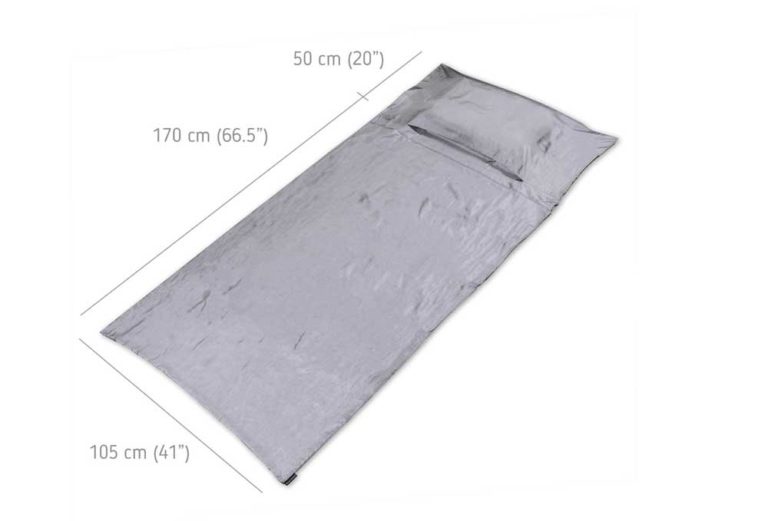
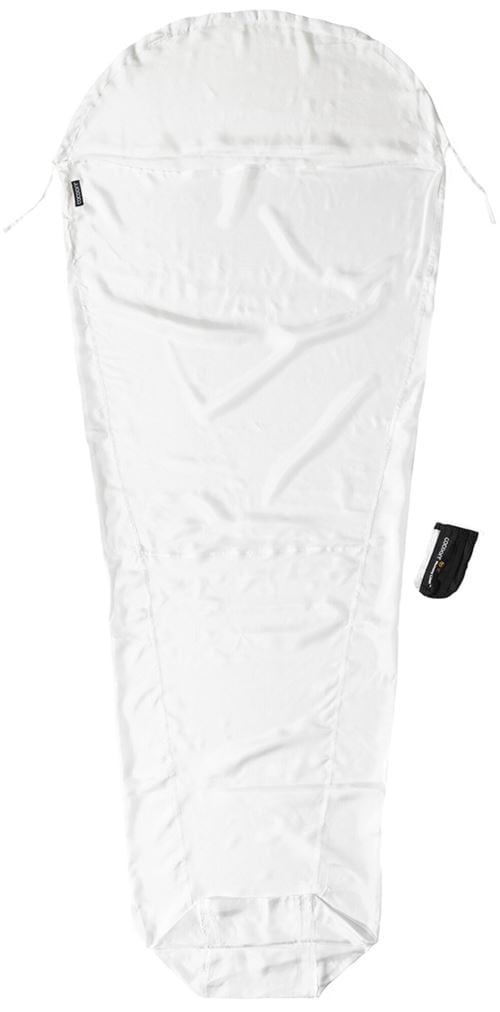
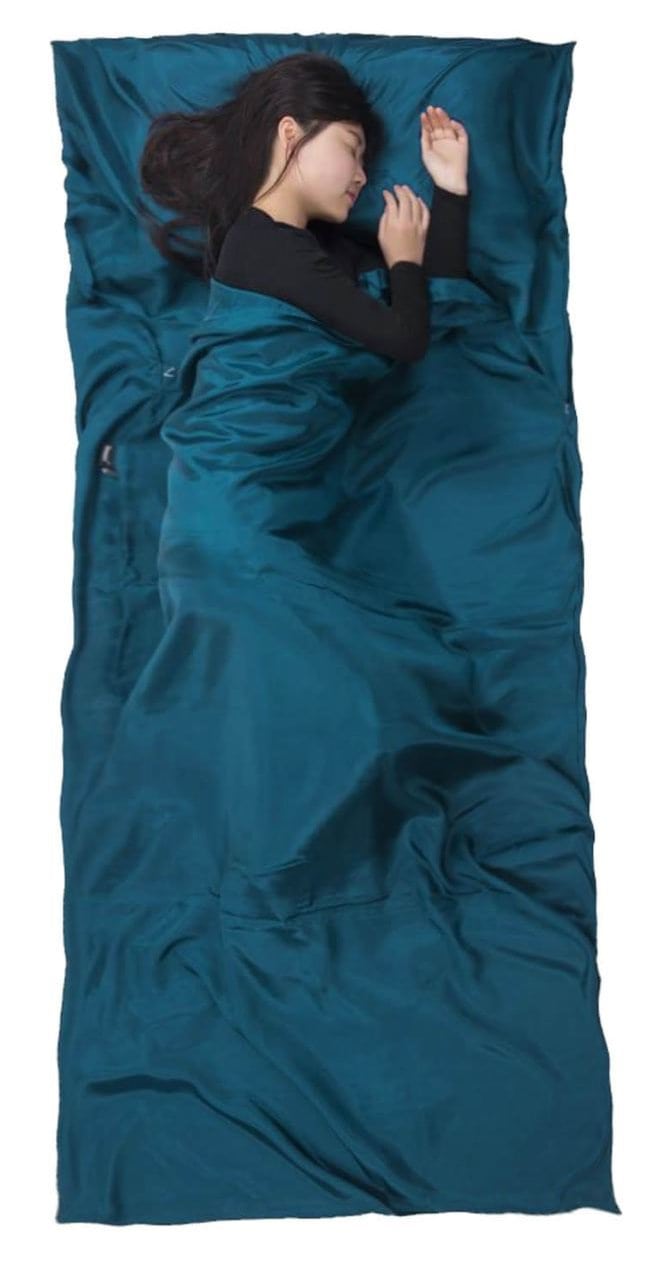
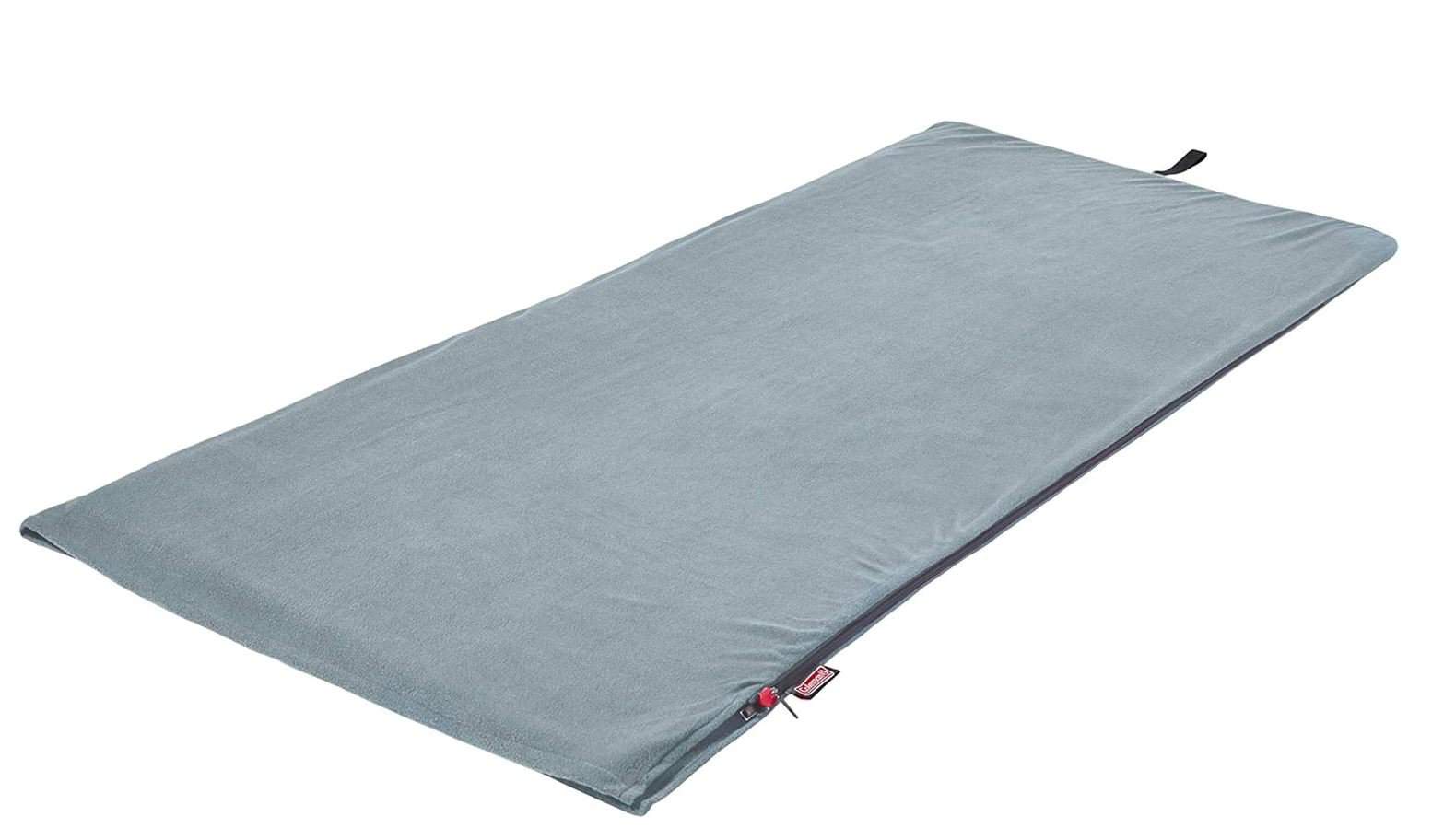
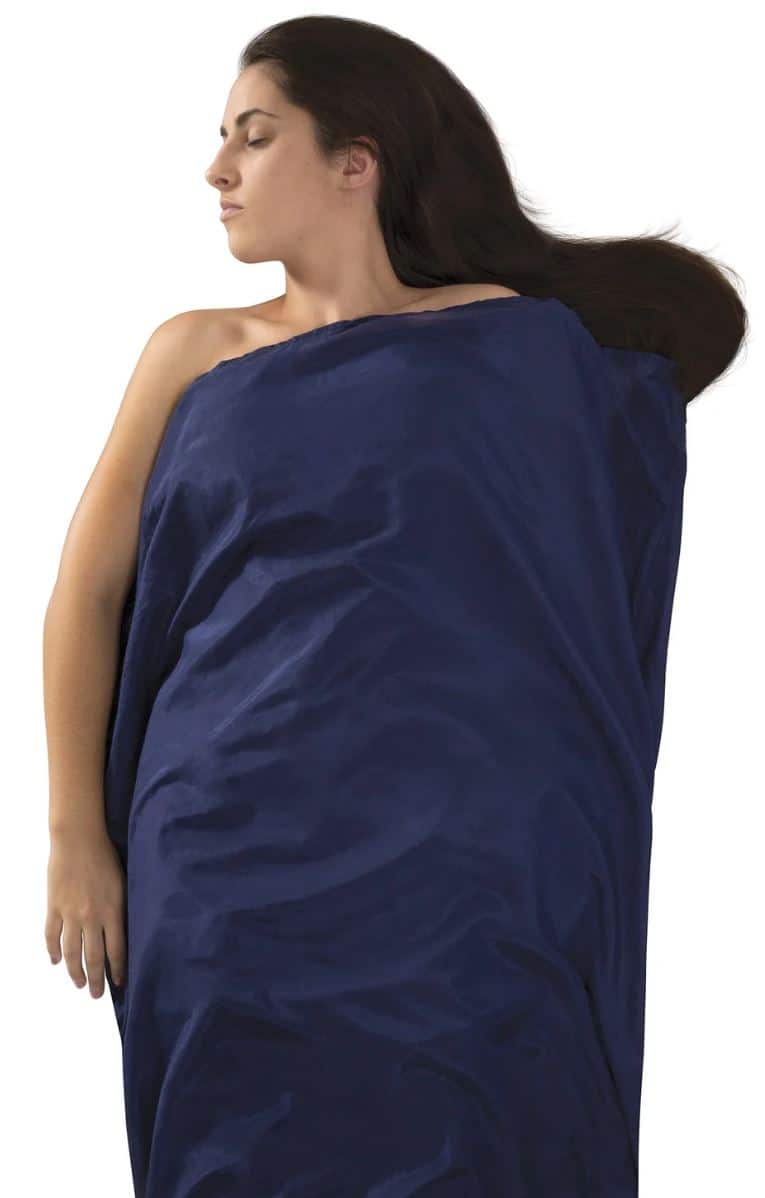
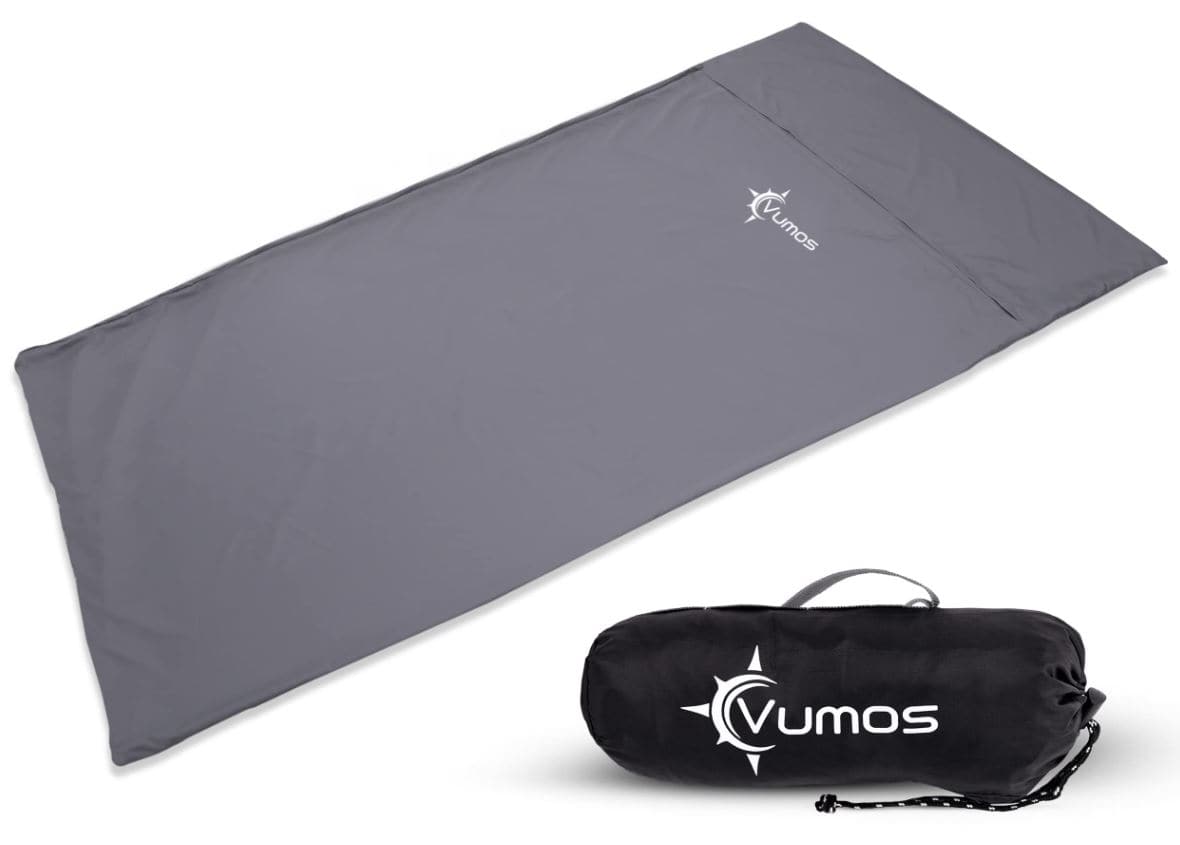
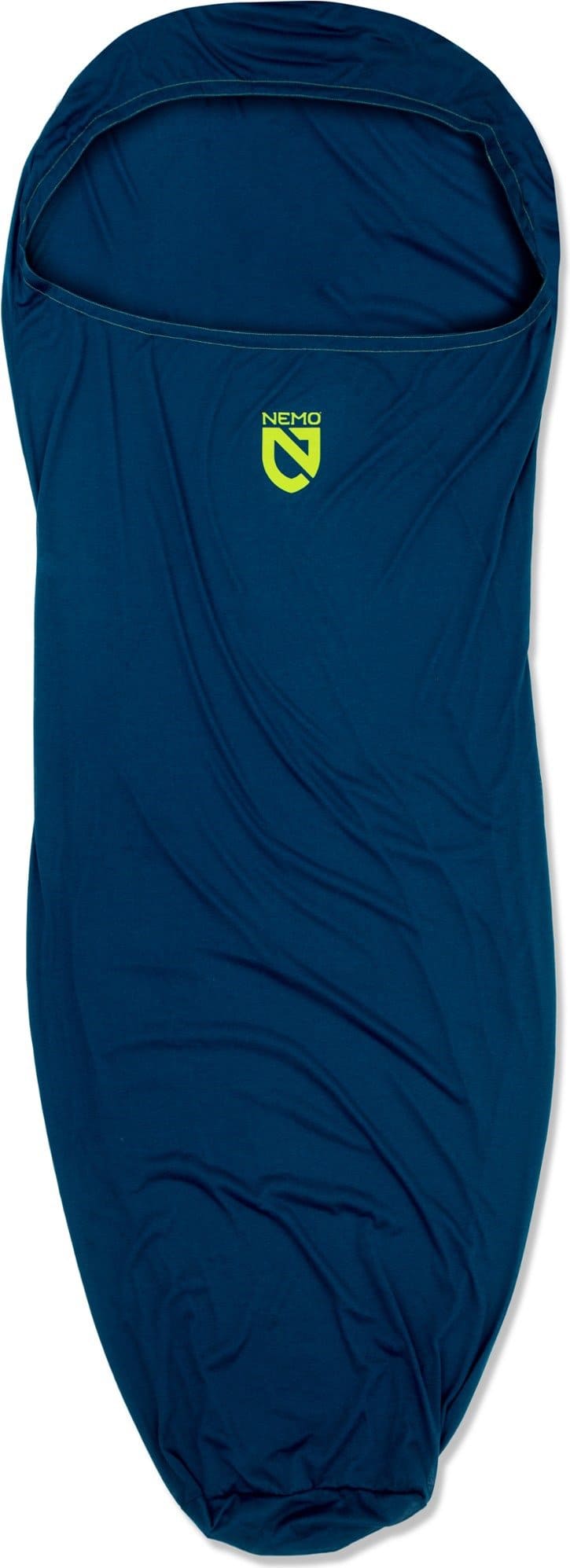
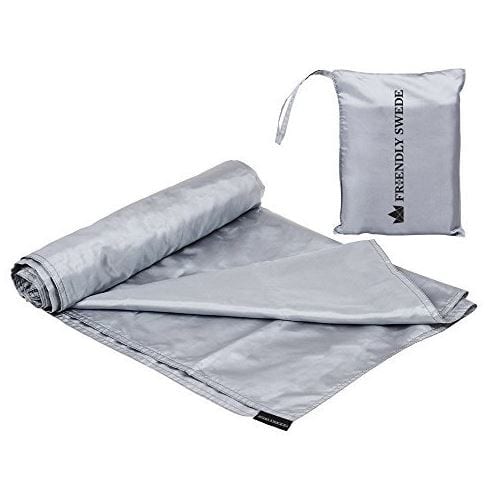
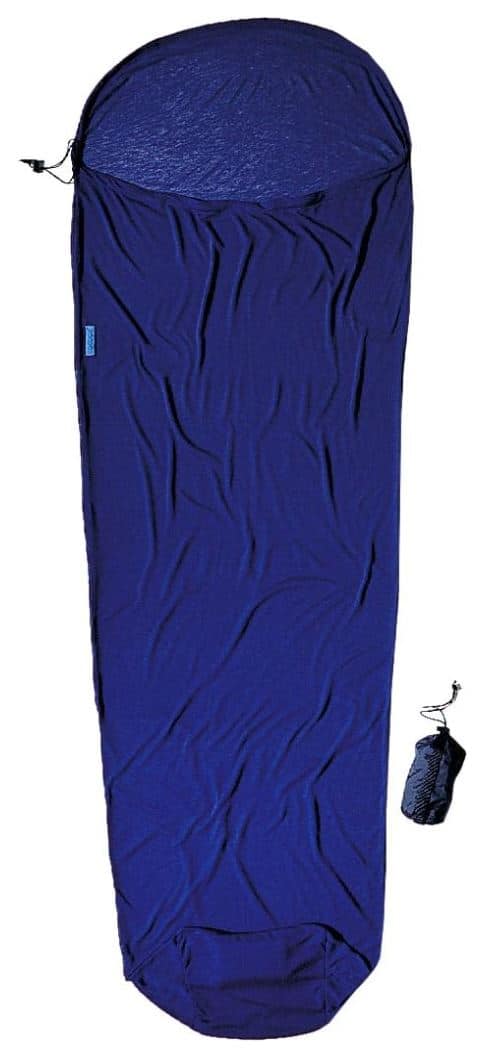
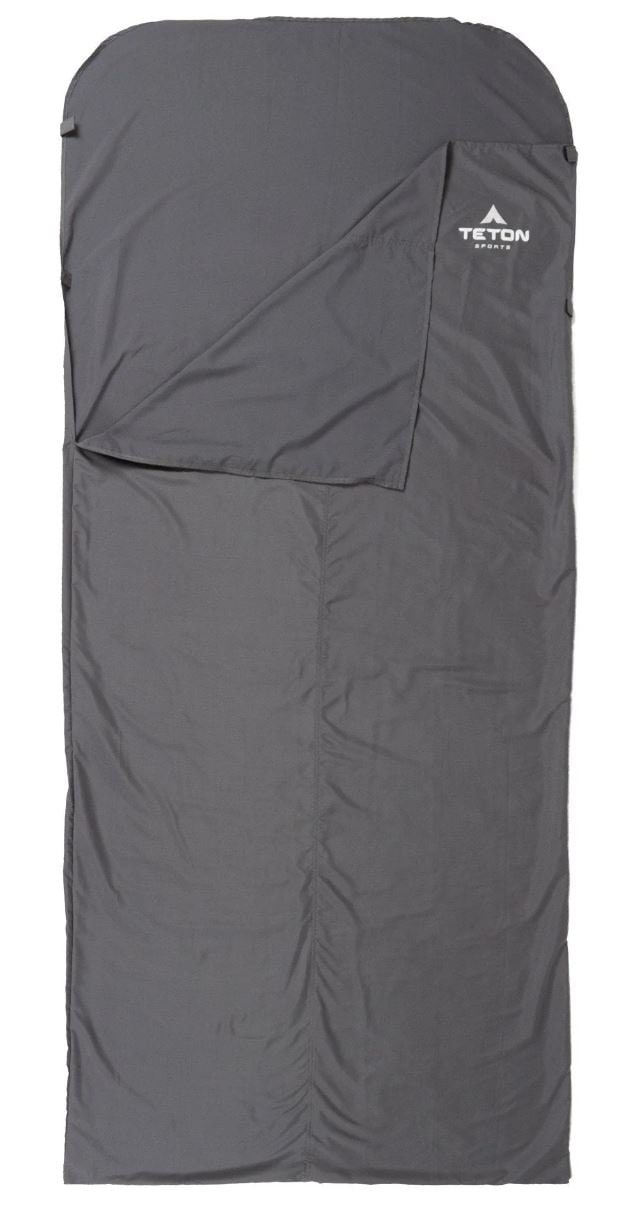
Really, really helpful information, thank you.
I’ve had three Sea to Summit. My first, 30 years ago, was the ultimate. It was high mumm, side entry, lasted 15 years perfect. Next one shredded because it was so thin against my rough feet, and the stupid “stretch panels” only serve to cause two creases on my thighs silk seams don’t leave creases on my thighs, from those panels. Because of the rips at the feet within a year of use, Sea to Summit sent me a cotton replacement, but because it’s top entry, it’s all ripped at the “flap”
I so miss my side entry high mumm first bag 😭
Please can you find me a true silk side entry!